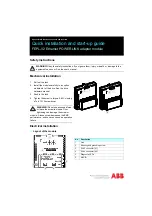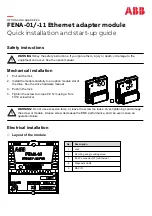
RUGGEDCOM ROS
User Guide
Chapter 5
Setup and Configuration
GMRP (GARP Multicast Registration Protocol)
207
Service Requirement Attributes are used to change the receiving port's multicast filtering behavior to one of the
following:
• Forward All Multicast group traffic in the VLAN, or
• Forward All Unknown Traffic (Multicast Groups) for which there are no members registered in the device in a
VLAN
If GMRP is disabled on the RSG2200 , GMRP packets received will be forwarded like any other traffic. Otherwise,
GMRP packets will be processed by the RSG2200, and not forwarded.
Example: Establishing Membership with GMRP
The following example illustrates how a network of hosts and switches can dynamically join two multicast groups
using GMRP.
In this scenario, there are two multicast sources, S1 and S2, multicasting to Multicast Groups 1 and 2,
respectively. A network of five switches, including one core switch (B), connects the sources to two hosts, H1 and
H2, which receive the multicast streams from S1 and S2, respectively.
A1
A2
A
E
C
D
S1
S2
H2
H1
E1
E2
C1
C2
B3
B4
B1
B2
B
D1
D2
1
1
2
3
Figure 152: Example – Establishing Membership with GMRP
1.
Multicast Source
2.
Switch
3.
Multicast Host
The hosts and switches establish membership with the Multicast Group 1 and 2 as follows:
1. Host H1 is GMRP unaware, but needs to see traffic for Multicast Group 1. Therefore, Port E2 on Switch E is
statically configured to forward traffic for Multicast Group 1.
2. Switch E advertises membership in Multicast Group 1 to the network through Port E1, making Port B4 on
Switch B a member of Multicast Group 1.
3. Switch B propagates the
join
message, causing Ports A1, C1 and D1 to become members of Multicast Group
1.
4. Host H2 is GMRP-aware and sends a
join
request for Multicast Group 2 to Port C2, which thereby becomes a
member of Multicast Group 2.
5. Switch C propagates the
join
message, causing Ports A1, B2, D1 and E1 to become members of Multicast
Group 2.
















































